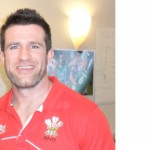by Chris Black & Ben Stirling
Ben Stirling and Chris Black both work in professional rugby league and have a particular interest in monitoring and physical performance, both in terms of injury prevention and strength and conditioning.
 Monitoring in Team Sports
Monitoring in Team Sports
As a Performance Staff it is our job to monitor the players well being in response to training and competition, on both an individual and collective basis. Currently at Castleford we look at the player’s perceptual responses to training with daily wellness scales to assess a number of different parameters that allow us to determine player’s physiological adaptation and response to training load. We correlate their feedback with our specific training KPIs (i.e. metres at intensity versus lower body soreness) to find any patterns that may indicate to us how we can adapt and manipulate training to increase the likelihood of a positive performance or decrease a player’s injury potential. For instance, if we see a decline in the squad’s perceptual energy levels through the week we may need to adapt the loading in the days leading up to a game to allow the players time to recover so they are as fresh as possible come game day. We can also track the players over the course of the season to assess their tolerance to load which may increase due to a positive adaption to training which will allow us to do more.
Loading and Recovery
Loading is of particular interest to us as it is the sum of all forces placed upon the body during games and training. This force can come from running, stopping, changes of direction, tackles and collisions all of which are frequent during the game/training of rugby league. Advances in match analysis technologies such as portable global positioning system (GPS) and integrated accelerometry have enabled investigators to accurately quantify activity profiles and the impact associated with collisions in contact sports (McLellan et al, 2012). A Formula One driver can experience nearly 5gs during heavy braking from maximum speed. We have recorded impacts of 12+gs during games this season and a core forward can be exposed to as many as 10-15 impacts of this magnitude every week during match play. Therefore ensuring that you prescribe adequate recovery strategies in the days following a game is vital in preparation for the next game.
Why heart rate variability (HRV)?
Assessing heart rate variability (the difference between heart beats during times of rest) in response to training/games and recovery sessions may allow us to gain a perspective into the physiological stress that a player faces in response to training. The traffic light system used by ithlete can also be useful in determining the intensity at which players should train at on a given day and may highlight early signs of overtraining. Coutts el al (2007) studied cases of overreaching in Rugby League and found that ‘Extended exposure of players to the demands of training and match play may lead to altered neuromuscular function and may contribute to the development of under-recovery, overreaching or overtraining syndrome in team sport athletes’. It has also been suggested that full recovery from overreaching can take between 3-4 weeks but full recovery from overtraining can take several months. This is why it is important to be able to spot signs of overtraining early enough so you may act accordingly. Using ithlete to monitor HRV will allow us to get a more in-depth analysis of how our players are recovering in response to training though the season.
Our Research Hypothesis
For my MSc Thesis I will investigate the player’s cardiovascular responses to impacts from games and training through the use of ithlete HRV monitoring techniques. In theory if a player experiences a higher than normal amount of intense collisions or impacts in training/games they should take longer to recover. This should correlate with a decline in the following HRV reading. I am hoping that HRV monitoring will allow us to become more specific in our prescription of training volumes and the intensities at which we train. This will have the knock on effect of prevention of overtraining and therefore injuries. Gabbett et al (2011) found that ‘Monitoring of training loads and careful scheduling of field and gymnasium sessions to avoid residual fatigue is warranted to minimize the effect of training-related injuries in professional rugby league players’. It should also allow us to track the fitness levels of the players through the season and can be correlated with stages of testing to validate programming.
About Us
 Chris is currently the Assistant Strength & Conditioning Coach at Castleford Tigers and is completing his MSc Thesis looking at player’s cardiovascular responses to impacts from games and training through the use of Ithlete HRV monitoring techniques. He is hoping that HRV monitoring will allow practitioners to become more specific in the prescription of training volumes and the intensities of training. This will have the knock on effect of prevention of overtraining and also allow us the tracking of fitness through the season. For up to the minute news on the research follow Chris on Twitter @cblack38
Chris is currently the Assistant Strength & Conditioning Coach at Castleford Tigers and is completing his MSc Thesis looking at player’s cardiovascular responses to impacts from games and training through the use of Ithlete HRV monitoring techniques. He is hoping that HRV monitoring will allow practitioners to become more specific in the prescription of training volumes and the intensities of training. This will have the knock on effect of prevention of overtraining and also allow us the tracking of fitness through the season. For up to the minute news on the research follow Chris on Twitter @cblack38
 Ben is currently the Head Physiotherapist for Warrington Wolves and Wales Rugby League. He is also completing his MSc in Biomechanics. He is working alongside Bolton University as part of a clinical interest group that is reviewing the correlation between monitoring data, including HRV, and injury epidemiology in elite Rugby League. Ben is also on Twitter @corephysiouk
Ben is currently the Head Physiotherapist for Warrington Wolves and Wales Rugby League. He is also completing his MSc in Biomechanics. He is working alongside Bolton University as part of a clinical interest group that is reviewing the correlation between monitoring data, including HRV, and injury epidemiology in elite Rugby League. Ben is also on Twitter @corephysiouk

Hi guys hope you are well,
I was interested in your masters thesis and wondered how you were measuring the collisions and correlating that with HRV readings?
Hi Adam. Thanks for the comment and the good wishes. That’s quite an old article now, though still relevant I think! I would suggest contacting the authors on Twitter @cblack38 and @corephysiouk. Please also tag @myithlete so we can see what they say for future enquiries.